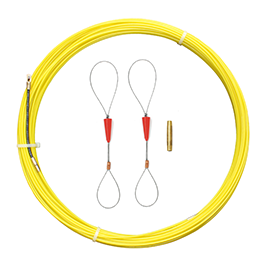
-
 Afrikaans
Afrikaans -
 Albanian
Albanian -
 Amharic
Amharic -
 Arabic
Arabic -
 Armenian
Armenian -
 Azerbaijani
Azerbaijani -
 Basque
Basque -
 Belarusian
Belarusian -
 Bengali
Bengali -
 Bosnian
Bosnian -
 Bulgarian
Bulgarian -
 Catalan
Catalan -
 Cebuano
Cebuano -
 Corsican
Corsican -
 Croatian
Croatian -
 Czech
Czech -
 Danish
Danish -
 Dutch
Dutch -
 English
English -
 Esperanto
Esperanto -
 Estonian
Estonian -
 Finnish
Finnish -
 French
French -
 Frisian
Frisian -
 Galician
Galician -
 Georgian
Georgian -
 German
German -
 Greek
Greek -
 Gujarati
Gujarati -
 Haitian Creole
Haitian Creole -
 hausa
hausa -
 hawaiian
hawaiian -
 Hebrew
Hebrew -
 Hindi
Hindi -
 Miao
Miao -
 Hungarian
Hungarian -
 Icelandic
Icelandic -
 igbo
igbo -
 Indonesian
Indonesian -
 irish
irish -
 Italian
Italian -
 Japanese
Japanese -
 Javanese
Javanese -
 Kannada
Kannada -
 kazakh
kazakh -
 Khmer
Khmer -
 Rwandese
Rwandese -
 Korean
Korean -
 Kurdish
Kurdish -
 Kyrgyz
Kyrgyz -
 Lao
Lao -
 Latin
Latin -
 Latvian
Latvian -
 Lithuanian
Lithuanian -
 Luxembourgish
Luxembourgish -
 Macedonian
Macedonian -
 Malgashi
Malgashi -
 Malay
Malay -
 Malayalam
Malayalam -
 Maltese
Maltese -
 Maori
Maori -
 Marathi
Marathi -
 Mongolian
Mongolian -
 Myanmar
Myanmar -
 Nepali
Nepali -
 Norwegian
Norwegian -
 Norwegian
Norwegian -
 Occitan
Occitan -
 Pashto
Pashto -
 Persian
Persian -
 Polish
Polish -
 Portuguese
Portuguese -
 Punjabi
Punjabi -
 Romanian
Romanian -
 Russian
Russian -
 Samoan
Samoan -
 Scottish Gaelic
Scottish Gaelic -
 Serbian
Serbian -
 Sesotho
Sesotho -
 Shona
Shona -
 Sindhi
Sindhi -
 Sinhala
Sinhala -
 Slovak
Slovak -
 Slovenian
Slovenian -
 Somali
Somali -
 Spanish
Spanish -
 Sundanese
Sundanese -
 Swahili
Swahili -
 Swedish
Swedish -
 Tagalog
Tagalog -
 Tajik
Tajik -
 Tamil
Tamil -
 Tatar
Tatar -
 Telugu
Telugu -
 Thai
Thai -
 Turkish
Turkish -
 Turkmen
Turkmen -
 Ukrainian
Ukrainian -
 Urdu
Urdu -
 Uighur
Uighur -
 Uzbek
Uzbek -
 Vietnamese
Vietnamese -
 Welsh
Welsh -
 Bantu
Bantu -
 Yiddish
Yiddish -
 Yoruba
Yoruba -
 Zulu
Zulu


Nov . 22, 2024 16:59 Back to list
rotating electrical connection
The Dynamics of Rotating Electrical Connections Innovations and Applications
In today's rapidly advancing technological world, rotating electrical connections have become a pivotal element in various industries, ranging from robotics to renewable energy. These innovative connections allow the seamless transfer of electrical power and signals between stationary and rotating components, facilitating the efficient operation of numerous devices and machinery.
Rotating electrical connections, often referred to as rotary unions or slip rings, serve as vital components in systems where rotational movement is necessary. They are essential in applications where it is impractical to use traditional wired connections, as such wiring would become tangled or damaged during movement. For instance, in wind turbines, slip rings enable the transfer of electrical energy generated by the rotating blades to the grid, ensuring consistent power output. Similarly, in industrial machinery, these connections are crucial for transmitting current to motors, sensors, and other systems that require rotational motion.
The design and functionality of rotating electrical connections have evolved significantly over the years. Modern slip rings can accommodate various electrical configurations, including power, data, and even fluid transfer, all within a compact interface. Advanced materials and precision engineering have enabled these devices to withstand harsh environments, high speeds, and significant wear and tear, making them reliable components for critical applications.
rotating electrical connection

One of the remarkable innovations in this field is the development of fiber optic slip rings, which allow for high-speed data transmission alongside traditional electrical currents. This technology is particularly beneficial in sectors like telecommunications and video surveillance, where real-time data transfer is paramount. Fiber optic slip rings mitigate issues related to electromagnetic interference, providing clear and uninterrupted signals.
Moreover, the integration of smart technologies into rotating electrical connections is on the rise. With the advent of the Internet of Things (IoT), many companies are integrating sensors and monitoring systems into their slip rings, enabling predictive maintenance and enhancing operational efficiency. These smart slip rings provide real-time data on wear and performance, allowing for timely interventions and minimizing downtime.
In conclusion, rotating electrical connections represent an essential component in modern engineering and technology. Their ability to ensure reliable power and signal transmission across rotating interfaces cannot be overstated. As industries continue to evolve, the demand for innovative and efficient rotating electrical connections will undoubtedly grow, paving the way for advancements that enhance functionality and reliability across various applications.
Latest news
What Are Construction Tools and How Are They Used?
NewsJul.11,2025
Professional-Grade Duct Rodding Tools for Superior Cable Installation
NewsJul.11,2025
Enhancing Safety and Efficiency with Modern Hot Stick Solutions
NewsJul.11,2025
Empowering Cable Installation with Advanced Rodder Solutions
NewsJul.11,2025
Elevate Your Cable Installation Projects with Cable Pulling Tools
NewsJul.11,2025
Efficient Cable Handling Solutions: Cable Rollers for Sale
NewsJul.11,2025











